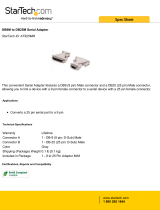
UM028704-0920
Standalone Programming of Devices
After successfully downloading target information and an application image (Hex) file into the ZSP
dongle, the ZSP can be used in standalone mode. The following operations can be performed:
Verify(VFY)
Target memory is compared against the ZSP image file used for programming. If all data matches,
then the status LED turns green, the checksum of target memory is displayed on the LCD panel,
and the ZSP emits a sequence of three short beeps to indicate the operation succeeded . If the
data does not match, the status LED turns red, the LCD panel displays one of the ZSP Error
Codes (negative number) for approximately 2 seconds, and the ZSP emits 1 long
beep. Regardless of whether the target configuration includes serialization, target serial numbers
are ignored during device verification. For the S3 Family of devices, the Smart Option and
Protection bits
1
are also verified before indicating whether the operation succeeded.
Program(PGM)
Target memory is erased (see ERS below) and the image file previously downloaded into the ZSP
is programmed into the target. If the target configuration includes serialization, then the ZSP also
programs the next sequential serial number into target Flash (and internally increments the target
serial number). For the S3 Family of devices, the ZSP programs the Smart Option and Protection
bits according to the previously downloaded configuration information. After programming the
target, serial number and smart options, the ZSP automatically performs a verify operation (see
VFY above). If the verify operation succeeds, the Protection bits are also programmed.
Erase (ERS)
For the S3 family of devices, erasing target memory also erases the Smart Option and Protection
bits. If the erase operation succeeds, then the status LED turns green, the checksum of target
memory is displayed on the LCD panel, and the ZSP emits a sequence of three short beeps. If the
operation fails, then the status LED turns red, the LCD panel displays one of the ZSP Error Codes
(negative number) for approximately 2 seconds, and the ZSP emits 1 long beep. It is not
necessary to manually erase the contents of target Flash prior to initiating a programming
operation (see PGM above).
To perform an operation in standalone mode, move the slider below the LCD panel into desired
position (ERS, VFY, or PGM) and press the EXE button. While the requested operation is in
progress, the Yellow power LED blinks.






















